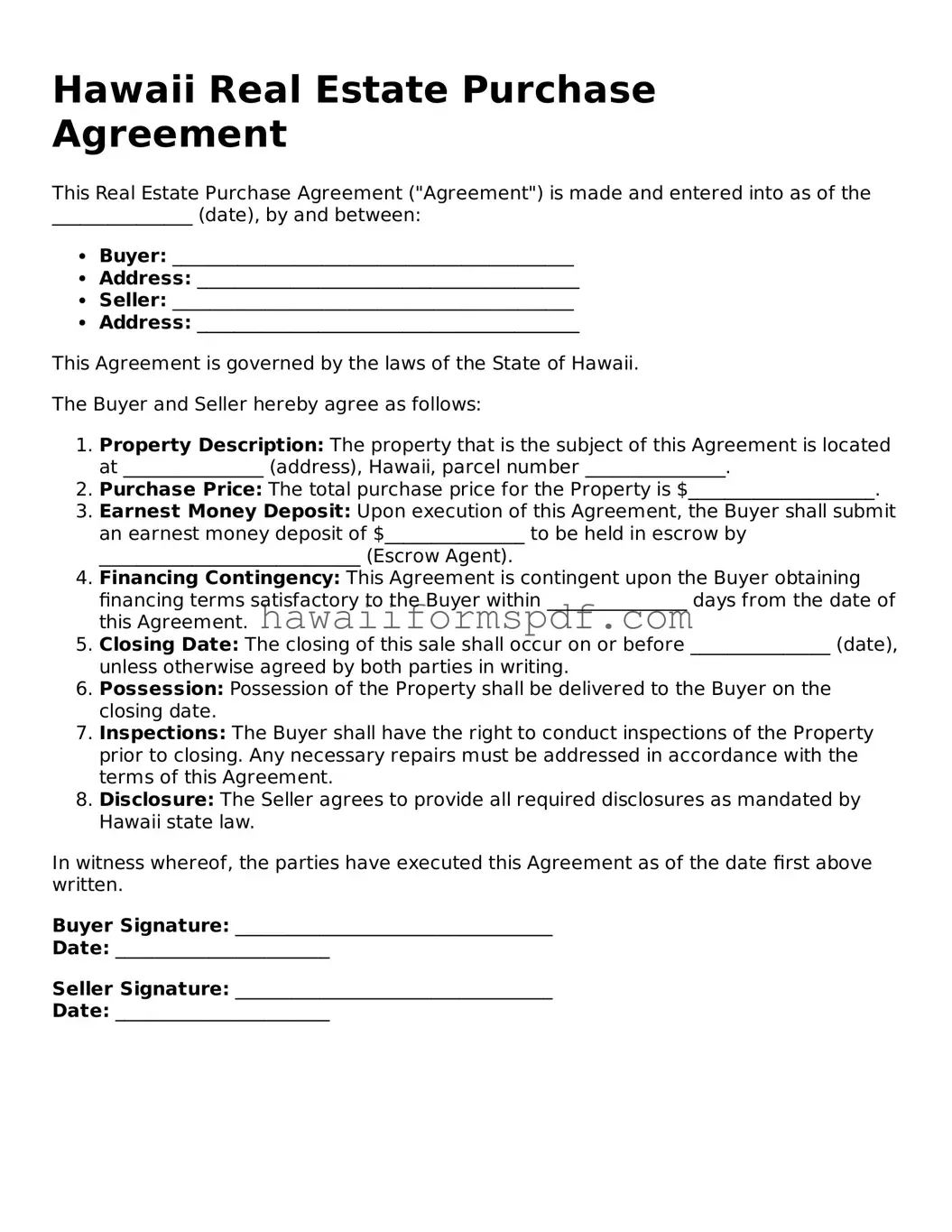Hawaii Real Estate Purchase Agreement
This Real Estate Purchase Agreement ("Agreement") is made and entered into as of the _______________ (date), by and between:
- Buyer: ___________________________________________
- Address: _________________________________________
- Seller: ___________________________________________
- Address: _________________________________________
This Agreement is governed by the laws of the State of Hawaii.
The Buyer and Seller hereby agree as follows:
- Property Description: The property that is the subject of this Agreement is located at _______________ (address), Hawaii, parcel number _______________.
- Purchase Price: The total purchase price for the Property is $____________________.
- Earnest Money Deposit: Upon execution of this Agreement, the Buyer shall submit an earnest money deposit of $_______________ to be held in escrow by ____________________________ (Escrow Agent).
- Financing Contingency: This Agreement is contingent upon the Buyer obtaining financing terms satisfactory to the Buyer within _______________ days from the date of this Agreement.
- Closing Date: The closing of this sale shall occur on or before _______________ (date), unless otherwise agreed by both parties in writing.
- Possession: Possession of the Property shall be delivered to the Buyer on the closing date.
- Inspections: The Buyer shall have the right to conduct inspections of the Property prior to closing. Any necessary repairs must be addressed in accordance with the terms of this Agreement.
- Disclosure: The Seller agrees to provide all required disclosures as mandated by Hawaii state law.
In witness whereof, the parties have executed this Agreement as of the date first above written.
Buyer Signature: __________________________________
Date: _______________________
Seller Signature: __________________________________
Date: _______________________
